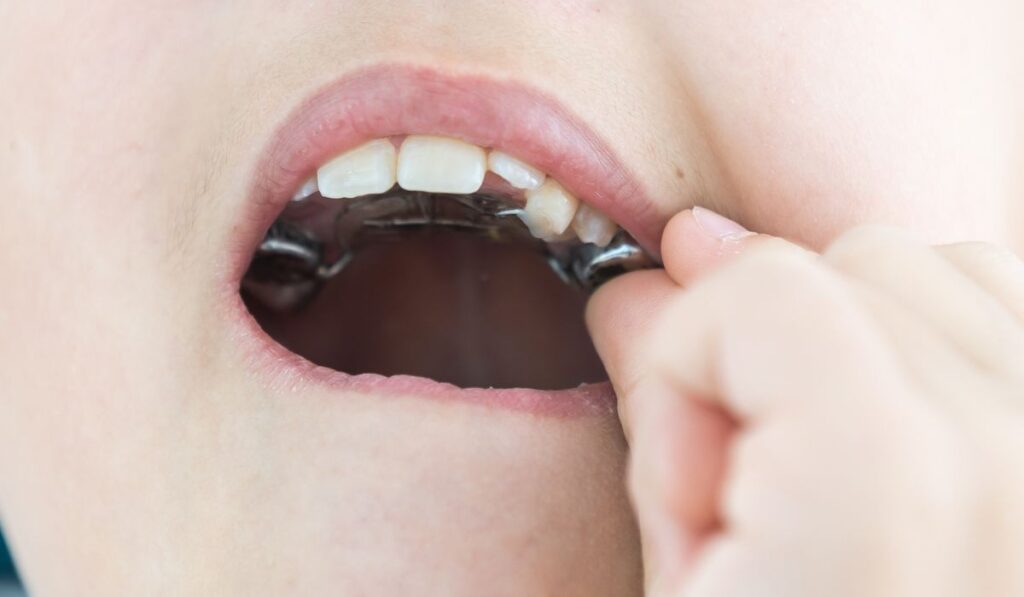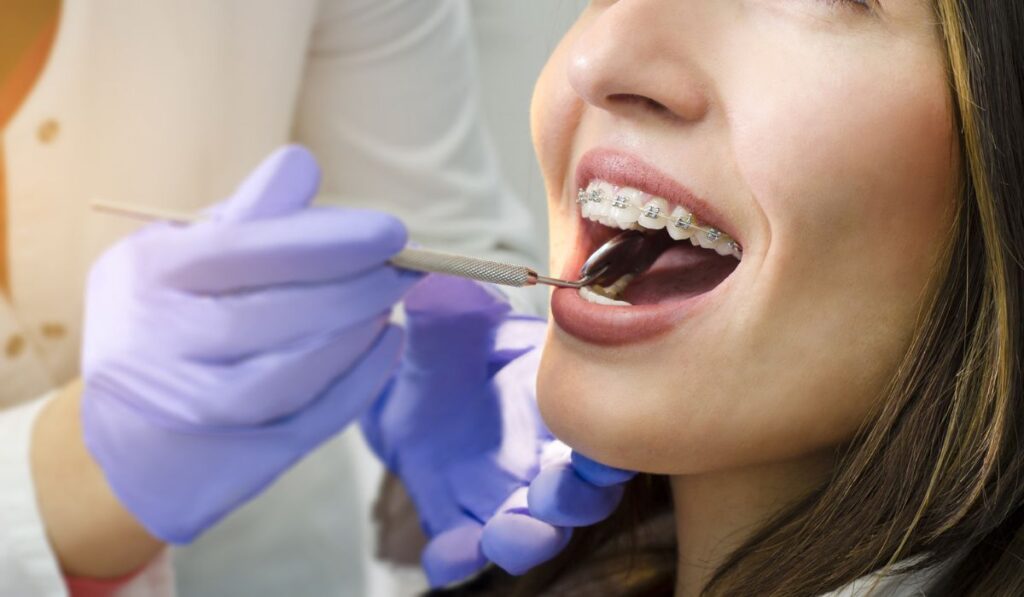A narrow palate is one of the most common oral abnormalities; it affects 4 in every 16 adults. Several factors like thumbsucking and genetics can interrupt the development of a person’s mouth cavity, often leading to a high and narrow palate.
Braces can fix the placement of your teeth, but they can’t do much for your palate. Expanders are Orthondist appliances that can expand the roof of your mouth and treat a narrow palate. They’re similar to braces but serve a different purpose.
A narrow palate is an anomaly caused by various factors such as aggressive thumbsucking and genetics. Braces may alleviate symptoms triggered by a narrow palate but can’t permanently widen it. So now, let’s learn more about narrow palates and how to treat them.
What is a Narrow Palate?

Before we delve into what a narrow palate is and what it entails, let’s start by defining what a palate is. In simple terms, the palate is the top or roof of the mouth that separates the mouth and nose cavities.
It plays several critical roles in the mouth, such as facilitating coherent speech, swallowing, and breathing. While palate width differs from person to person, the normal range of palate width, measured from the widest part of the palate, is 50 to 53 mm. Anything significantly lower than that is considered narrow.
In essence, a narrow palate is a structural anomaly of the mouth and palate resulting from several factors. It’s most commonly present in babies, but adults can also fall victim to the anomaly. A narrow palate is a risk factor for the following conditions:
Obstructed Sleep Apnea
The mouth is filled with numerous muscles that support the throat, tongue, palate, and other soft organs. These muscles make breathing possible even when you’re asleep.
Obstructive Sleep Apnea occurs when the muscles in your mouth constantly relax in your sleep, obstructing the upper airway and making it difficult to breathe.
Impacted Teeth
Impacted teeth are teeth that don’t emerge from the gums; sometimes, they emerge only partially. The leading cause of impacted teeth is insufficient space in the mouth.
They generally cause no symptoms, but in some cases, symptoms like bad breath, difficulty opening the mouth, and swollen gums can be observed. Home remedies and over-the-counter painkillers (on Amazon) can relieve the throbbing sensation and pain frequently experienced.
Speech Impairment
A speech impairment is an inability to produce coherent speech sounds. Speech impairment cases vary from mild to severe. Examples of speech impairments are slurred, stuttered, or overly rapid speech.
What Causes Narrow Palate?
Various factors are known to contribute to the development of a narrow palate, but the following are the most common causes:
Abnormal Mouth Development
Narrow palates are sometimes caused by anomalies in the development of the mouth cavity. These anomalies generally occur following disturbances and disruptions in the development process.
Genetics
Genetic mutations also play a massive role in causing narrow palates. However, with genetic mutations, the signs aren’t always evident in babies; they only become apparent years after birth. A telltale sign of possible inherited abnormalities is the presence of such anomalies in family members.
Consistent Thumb Sucking
Thumb sucking may seem like an innocent gesture, and for the most part, it is, but it can have serious repercussions.
Thumb sucking applies pressure on the bones of the palate, forcing the palate to grow narrow in shape as it’s pushed higher. This phenomenon primarily affects kids, as their bones are soft and developing.
Tongue-Tie
As the name suggests, a tongue tie is a condition whereby the tongue’s movements are restricted by a short band keeping the tongue tethered to the mouth floor.
This makes eating, speaking, and swallowing difficult. In addition, with a tongue tie, the tongue cannot touch the roof of the mouth to exert the necessary pressure required to widen the palate.
Can Braces Fix a Narrow Palate?
When braces are installed and adjusted, they push and pull the teeth to realign them. The surrounding bones respond to this pressure by reshaping themselves over time to conform to the new positioning of the teeth.
In essence, braces are used to treat any dental issues caused by abnormal oral structure. However, since there’s no correlation between the positioning of teeth and a narrow palate, braces typically can’t fix narrow palates. Expanders, on the other hand, can.
Expanders are Orthodontist devices similar to braces, but their primary function is to expand the roof of the mouth. Hence, the name. The palate comprises two identical parts joined together by a type of sature.
When expanders are placed, they exert pressure on either half of the palate to pull them apart. So, naturally, the bones in the palate break themselves down and regenerate to fill the additional space.
What is the Difference Between Braces and Expanders?

Because the two devices have similar mechanisms, it’s easy to confuse one for the other or think they can be used interchangeably. For starters, they perform related but different functions.
In simple terms, expanders create more space in the mouth cavity, and braces use the extra space to reposition the teeth. That said, expanders are often used as a pretreatment for braces.
Another critical difference between the two devices is that expanders are versatile, unlike braces, which generally serve a single purpose. As a result, expanders can treat various medical and cosmetic issues, including crossbites, crowded teeth, and overlapping teeth.
Conclusion
Expanders are very effective at rectifying a wide variety of dental issues, but they’re not free of drawbacks. For one, they’re bulky equipment, naturally making wearing them an uncomfortable experience. Additionally, they tend to cause more pain than braces.
Braces are also effective in their own right, but they’re associated with several drawbacks. However, while expanders can treat specific issues usually treated with braces, braces generally can’t be swapped in for expanders.


